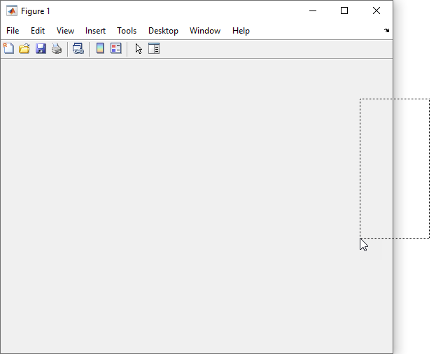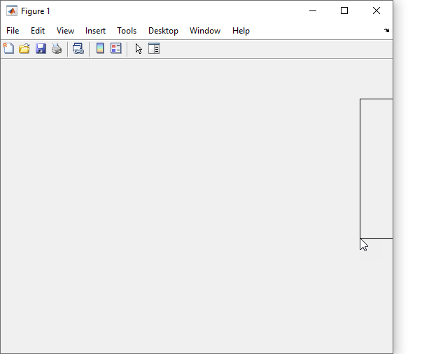dragrect
通过鼠标拖动绘制矩形
语法
[finalrect] = dragrect(initialrect)
[finalrect] = dragrect(initialrect,stepsize)
说明
[finalrect] = dragrect(initialrect) 跟踪屏幕上任意位置的一个或多个矩形。n×4 矩阵 initialrect 定义这些矩形。initialrect 的每行必须包含 [left bottom width height] 值形式的初始矩形位置。dragrect 在 finalrect 中返回矩形的最终位置。
[finalrect] = dragrect(initialrect,stepsize) 以增量 stepsize 移动矩形。第一个矩形的左下角受限于从图窗左下角开始的大小等于 stepsize 的网格,并且其他的所有矩形保持它们相对于第一个矩形的原始偏移量。
[finalrect] = dragrect(...) 在鼠标按键被释放时返回矩形的最终位置。默认步长是 1。
示例
详细信息
提示
如果当前未按鼠标按键,dragrect 立即返回结果。在 ButtonDownFcn 中或从命令行中结合使用 dragrect 和 waitforbuttonpress,确保在调用 dragrect 时按下鼠标按键。鼠标按键释放时 dragrect 返回结果。
如果拖动结束时位于图窗窗口内,则返回矩形在该图窗的坐标系中的位置。如果拖动结束时位于图窗窗口外的屏幕,则返回矩形在拖动开始时所在图窗的坐标系中的位置。
注意
不能对 dragrect 使用归一化的图窗单元。

